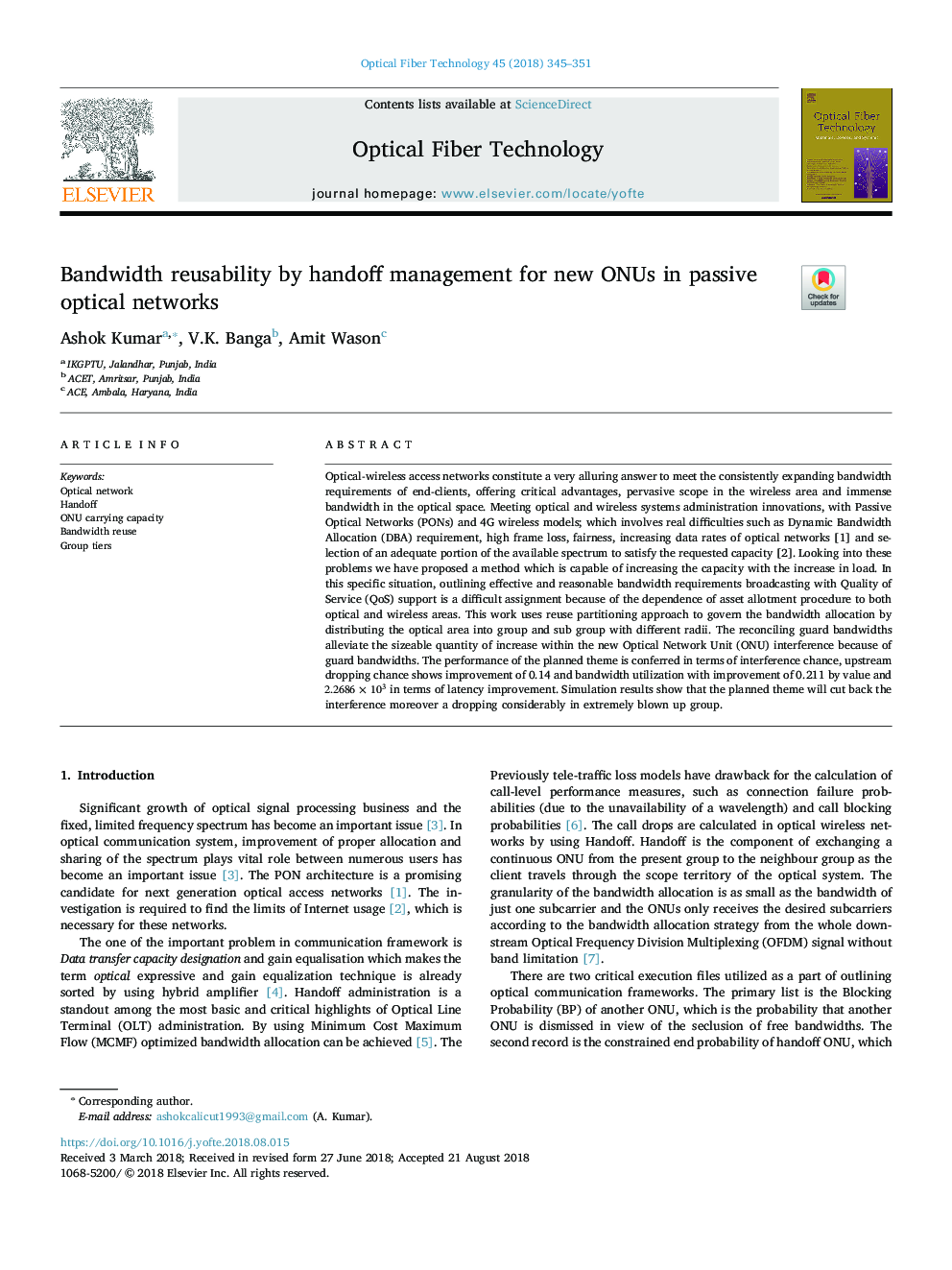| Article ID | Journal | Published Year | Pages | File Type |
|---|---|---|---|---|
| 11002588 | Optical Fiber Technology | 2018 | 7 Pages |
Abstract
Optical-wireless access networks constitute a very alluring answer to meet the consistently expanding bandwidth requirements of end-clients, offering critical advantages, pervasive scope in the wireless area and immense bandwidth in the optical space. Meeting optical and wireless systems administration innovations, with Passive Optical Networks (PONs) and 4G wireless models; which involves real difficulties such as Dynamic Bandwidth Allocation (DBA) requirement, high frame loss, fairness, increasing data rates of optical networks [1] and selection of an adequate portion of the available spectrum to satisfy the requested capacity [2]. Looking into these problems we have proposed a method which is capable of increasing the capacity with the increase in load. In this specific situation, outlining effective and reasonable bandwidth requirements broadcasting with Quality of Service (QoS) support is a difficult assignment because of the dependence of asset allotment procedure to both optical and wireless areas. This work uses reuse partitioning approach to govern the bandwidth allocation by distributing the optical area into group and sub group with different radii. The reconciling guard bandwidths alleviate the sizeable quantity of increase within the new Optical Network Unit (ONU) interference because of guard bandwidths. The performance of the planned theme is conferred in terms of interference chance, upstream dropping chance shows improvement of 0.14 and bandwidth utilization with improvement of 0.211 by value and 2.2686Ã103 in terms of latency improvement. Simulation results show that the planned theme will cut back the interference moreover a dropping considerably in extremely blown up group.
Keywords
Related Topics
Physical Sciences and Engineering
Computer Science
Computer Networks and Communications
Authors
Ashok Kumar, V.K. Banga, Amit Wason,
